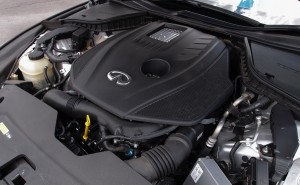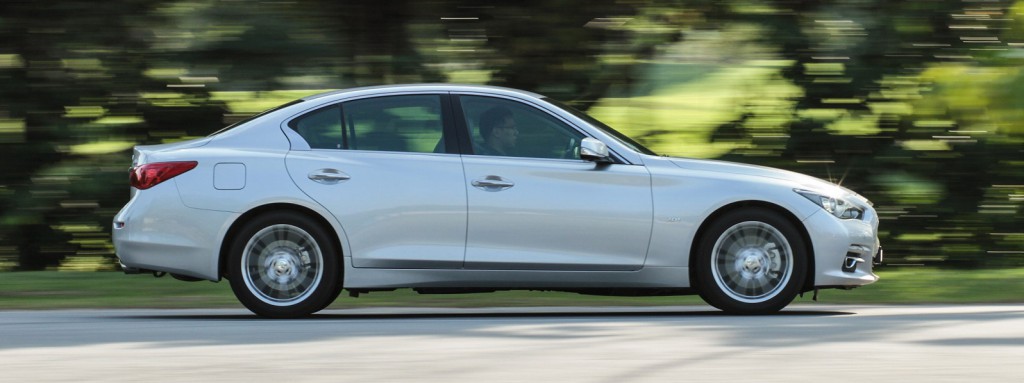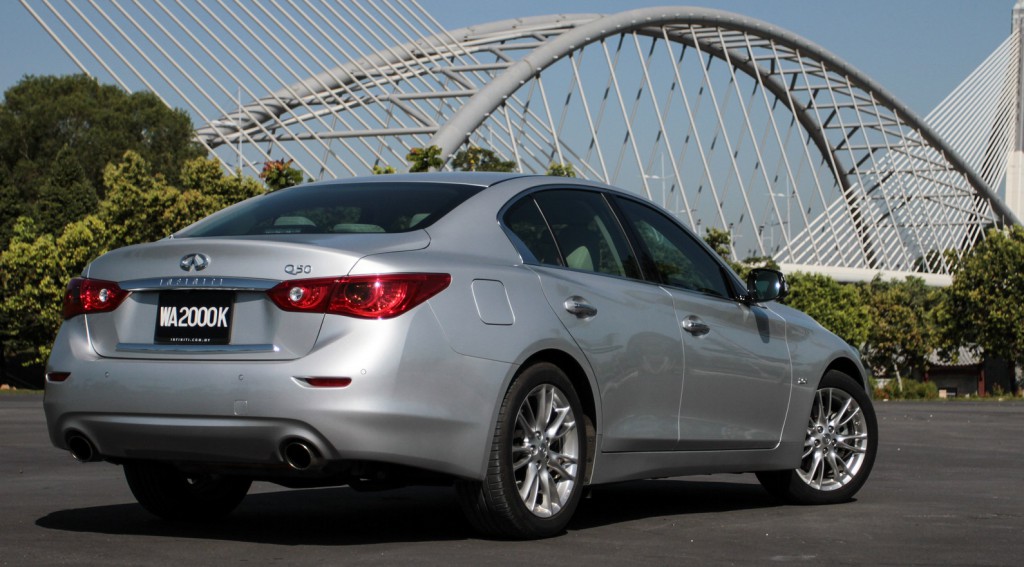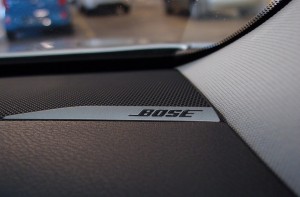Who buys an Infiniti Q50?
Simply put, the Q50 is a left field choice. As alluded by Vijay in the video, the Germans pretty much wrote the book on brand snobbery. The individual buying a Q50 would then have made a conscious decision to resist the lure of the Germans and to try something different. After all, no one wants to pay top dollar and walk into a lift to see another individual sporting the same timepiece or handbag.
Anything special about the Q50?

It has to be the technology. Infiniti Malaysia says that 60% of Q50 buyers choose the pricier Premium GT variant (there is a base GT variant at RM30K less) which comes with a dizzying array of safety tech including active braking/cruise control, lane departure warning/prevention and motion detection. There’s also cameras fore and aft and of course THAT steer-by-wire system (more later).
Performance wise, the Q50 is no slouch, 0-100km/h takes 7.2sec (320i territory) even if it tips the scale on the portly side of 1.7-tonne, the German muscle (211bhp/350Nm) from the Mercedes-sourced M274 2.0L turbo four-cylinder responds gamely when summoned by the right foot.
Less talked about are the Q50’s run-flat tyres (18-inch on our test car), but they do warrant an honourable mention as the Infiniti rides rather pliantly even on surfaces that are collaterally damaged by the on-going MRT road works, something BMWs have yet to fully manage with their run-flats.
And then there’s the interior, a proper premium effort with typical Asian attention to detail. The leather that lines the seats are plush, the shiny bits are made of real metal, in fact, all the touch points feels premium. If only the layout and usage of the dual-screen centre stack were less fussy, though over a passage of time, one will eventually get used to it , or maybe not. Copy the i-Drive and be done with?
The counterpoint
The debate on the Direct Adaptive Steering (DAS) system probably won’t go away until the Germans get in on the act. DAS does away with a direct mechanical link to the steering rack (there is a fail-safe), instead it acts on signals received from the driver (turning the wheel) which then summons the electric actuators or motors to work the rack which then turn the front wheels. The last commercial aircraft you flew most likely had that kind of system…since the 90s.
It’s a clever move on Infiniti’s part to get a steal on the rest. New technology is always good to tap on for marketing purposes, and to get people talking (which is what we are doing here). In everyday use, does it feel so different from an electric-powered steering system? No. When BMW introduced the variable-ratio rack (Active Steering) on the E60 5-Series (by the way, it worked great), the motoring press went to town, calling it “unnatural”. Last year, Porsche introduced its track-focused GT3 with only flappy pedals and a steering that’s not powered by the crank. Enthusiasts bemoaned the passing of the stick shift and non-hydraulic rack, but it crushed its predecessor on every measurable benchmark, so the critics went home and sulked.[quote_box_left]It’s a clever move on Infiniti’s part to get a steal on the rest. New technology is always good to tap on for marketing purposes, and to get people talking[/quote_box_left]

The difference in feel relative to a conventional rack, to me at least anyway, has to do with the level of isolation from the road. DAS filters out steering kickback, or chatter, and this is entirely in tune with the calming characteristics of the Q50. So while the steering doesn’t respond in quite the same fashion as a 3-Series would, it’s not a crime and probably intended to be this way.
There are some UK reviews that talks about not having the requisite steering feedback when on the limits of adhesion. Really? Is the Q50 a car for drifting or track work? My beef with the Q50’s steering isn’t some much that it lacks feel (Standard mode works just fine, quick enough as well) but insufficient steering lock (2.2 turns only) when making tight manoeuvres. Otherwise, the Q50 is as composed through corners as anyone could expect from a executive saloon of this size.
The tech will eventually go through iterations and make its way to mainstream cars in the not-to-distant future, the savings in componentry and weight will surely see to that. So let’s call time on this debate on DAS and recognise the Infiniti Q50 for what it is – a pretty smart luxury saloon in search of buyers who seek something different.
Price RM275,887.21 (w/o insurance)
Engine 2.0L petrol, 4-cyl, turbocharged
Output 211PS, 350Nm
Transmission 7-sp automatic, RWD
Performance 0-100km/h in 7.2sec, top speed 245km/h
Wheels/tyres 18in alloys, 225/50R18, Run-Flat Tyres



